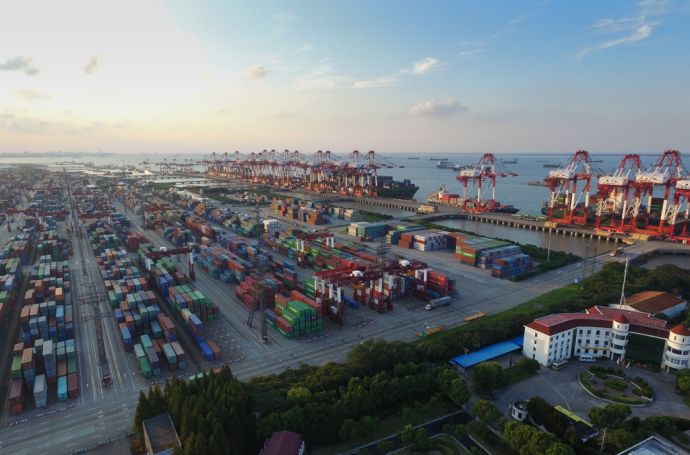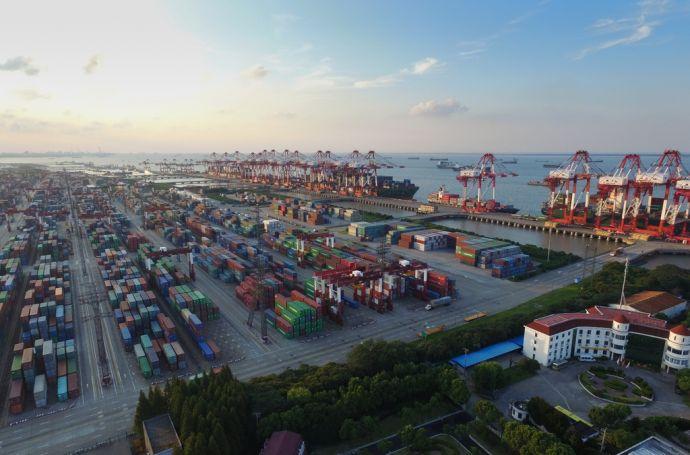
According to forecast made by experts, China will further ease market access for foreign investors through introducing policies that facilitate foreign investment. The government will continue to strive towards creating a fair and competitive market environment so that foreign-funded enterprises can enter, survive and develop well in China. It will also further optimize the structure of industry to facilitate foreign investment in future. As foreign capital enters more high value-added areas, it may make more efforts to strengthen the protection of intellectual property rights, enhance transparency of policies and regulations, and simplify administrative examination and approval procedures, so as to protect the legitimate rights and interests of foreign investment and let the favourable development of China better benefit the foreign capital entering China.
China has bright future prospects and abundant untapped potential in terms of attracting foreign investment.
Zhang Jianping, director of Regional Economic Cooperation Research Centre of the Academy of Ministry of Commerce, predicted that Chinese economy will maintain its high-speed growth to become the world’s largest economy in the future, which will involve huge development opportunities.
In terms of industrial development, the Chinese economy has shifted from the phase of rapid growth to the phase of high-quality development. Industries in the services sector and those related to consumption and high value-added industries will develop further in the future. These areas will provide abundant business opportunities for foreign investors.
Furthermore, Zhang pointed out that, foreign investors would have more opportunities to enter the Chinese market in future. Zhang attributed this forecast with effective implementation of various measures promoting foreign investment and further development of free trade zones and free trade ports.
“Our country’s comparative advantages are changing. In the past, we attracted foreign investment with our low factor costs. Today, we attracted foreign investment by huge market and well-educated workforce. These comparative advantages will certainly attract middle-and-high-end manufacturing and services industries in the future,” said Yang Changyong, an associate researcher at Foreign Economy Institute of Macroeconomic Academy of China Development and Reform Commission.
“Our approach towards attracting investment is also changing. We now lay more emphasis on the optimisation and upgrading of industrial structure and supply-side reforms. We shall promote foreign investment in the middle-and-high-end manufacturing industry and modern services that we want,” Yang added.
Meanwhile, Zhang Jun, chief economist with Morgan Stanley also believes that China might introduce more “global capital” and advanced technology to boost structural reforms in the future. “On the policy level, we will lower the access threshold, broaden the area scope for foreign capital and provide national treatment to foreign investors, allowing them to compete fairly in the market. At the same time, we should provide more preferential policies for talents, financing and taxation for foreign investments as long as the foreign investments keep in line with our pursuits of industrial upgrade and transformation,” Zhang Jun said.
As for future investment opportunities, HSBC believes that consumption and service industries will continue to grow under the premise of steady growth in domestic household income in China, and both of these areas will usher in more investment opportunities. In the current background of emphasising the quality of economic growth and industrial upgrading, it is expected that in the future, China’s high-end manufacturing, IT, environmental protection and new energy industries will usher in a new era of industrial upgrading and development, which will bring investment opportunities for overseas investors.
In addition, the Chinese market may also bring more “surprises” to foreign investors in some specific fields. The third Global Trade Outlook recently released by Baker & McKenzie’s International Law Firm estimates that mergers and acquisitions in the Chinese mainland will rebound in 2018. Among them, as China simplifies relevant laws to further attract foreign investment, the amount of inward M&A transactions is expected to increase by 73 percent from 28.1 billion U.S. dollars in 2017 to 47.9 billion U.S. dollars. In 2019, it is estimated that the transaction volume in M&A markets in the Chinese mainland will reach 297.1 billion U.S. dollars with a transaction volume of 2003 cases.
Financial Times reported recently that according to the forecast by the consulting firm Casey Quark, the managed assets of China’s investment industry would rise from about 2.8 trillion U.S. dollars at the end of last year to about 17 trillion U.S. dollars in 2030. By 2030, China will become the world’s second-largest market for asset management, accounting for half of the net inflow of funds to global investment management companies. The report further points out that, measures to liberalise the Chinese capital market may benefit the foreign-invested management companies that have maintained their advantages in international asset markets.
China committed to regulate and internationalize economic environment to attract foreign investment
This year, China has issued several policies and taken effective measures for promoting foreign investment, and The report of CPC’s 19th National Congress has clearly signalled the formation of a new opening-up pattern.
At the beginning of this year, the State Council of China promulgated Circular on Several Measures for Enhancing the Use of Foreign Funds for Opening to the Outside World with an aim to further expand the opening-up measures, attract foreign investment, and promote fair competition between domestic and foreign investors. Moreover, the government has published a “negative list” of foreign investments in the pilot free trade zones. It has also released Catalogue of Industries for the Guidance of Foreign Investment (2017) and Directory of Advantageous Foreign-Funded Industries in Central and Western Regions in order to reduce entry barriers. In addition, the government has amended Provisional Management Measures for the Establishment and Change of Record-Keeping of Foreign-Invested Enterprises to simplify the procedures for the establishment of foreign-funded enterprises. Furthermore, in August this year, the State Council issued Circular on Several Measures for Promoting the Growth of Foreign Investment. The document calls for making a “clear timetable and roadmap for opening up to the outside world” and “further expanding the scope of market access and opening-up”. Clearly demarcating the roles of government departments, it urges ministries and commissions to actively utilise foreign investment for cooperation initiatives.
Commenting on the introduction of policies related to foreign investment, experts interviewed stated that China has recognised the significance of foreign investment in developing an open economy and transforming the energy of the economy from old into new one. Foreign investment is leading China’s economic structural reform. In addition, investment in the services sector and high value-added industries reflects the direction of China’s future transformation.
China is advancing supply-side reforms alongside the Belt and Road (B&R) Initiative. In these pursuits, foreign investment has an important role to play. Efficient utilisation of foreign investment, improvement in market access and reforms in the foreign investment management model are critical to China’s long-term development.
Easing Market Access
Experts believe that China will not close its doors to the world and opening-up measures will now only intensify. “We should implement high-level policies for liberalisation of trade and investment and aptly mange ‘pre-entry national treatment’ and ‘negative list’, so as to improve market access, open up the services sector and protect the legal rights and interests of foreign investors,” states the report of the 19th National Congress of the Communist Party of China (CPC) which was delivered by China’s top leader Xi Jinping on October 18.
In addition, the State Council has issued two circulars laying down 20 and 22 measures, respectively, to promote foreign investment. It has also revised the Catalogue for the Guidance of Foreign Investment Industries, reducing the restrictive measures from 93 to 63. Moreover, it has issued a ‘negative list’ of foreign investment in pilot free trade zones for the year 2017, chucking out 10 items and 27 measures from the 2015 version. In this way, it has further relaxed restrictions on foreign acquisitions while enhancing transparency for foreign investment,” said Zhang.
Meanwhile, China has recently eased access to China’s financial market. Specifically, it will relax restrictions on the required investment ratio for single and multiple foreign investors in securities, fund management and futures companies, easing the ratio to 51 percent. After three years of implementation of the above measures, the investment ratio will not be restricted. Besides, China will lift the restriction whereby single foreign shareholding in a Chinese bank or financial assets management company cannot exceed 20 percent and the total shareholding cannot exceed 25 percent. It will implement standardised rules for equity ratio for both domestic and foreign banking investment. After three years, the proportion of investment made by single or multiple foreign investors in setting up life insurance companies will be relaxed to 51 percent. After five years, this requirement will be abolished altogether.
The international community has welcomed this “relaxation” in the proportion of foreign shareholding. “Substantial relaxation in China’s restrictions on foreign shareholding in Chinese banks has marked the further opening up of China’s financial industry to the outside world,” states a recent report by Reuters. “Citigroup had previously estimated that China’s bond, securities and bank assets markets have a trading volume of more than 50 trillion U.S. dollars a year, and it will be doubled by 2025 after foreign capital is fully liberalised,” Agencia EFE recently reported.
Many foreign-funded enterprises started rolling up their sleeves as soon as the foreign media reported this development. Representatives of some international investment banks, such as UBS and Morgan Stanley, have said that they were planning to increase their investment proportions in securities related joint ventures in China. “The policy of allowing foreign shareholding in securities trade is unexpected news. Morgan Stanley will raise its stock equity in Morgan Stanley Huaxin from 49 percent to 51 percent,” said Morgan Stanley CEO James Goleman.
Attracting Foreign Investment to Promote Supply-Side Reforms
Active utilisation of foreign investment is an important part of China’s strategy of opening up to the outside world. However, China’s utilisation of foreign capital faces new challenges as the notion of globalisation takes on a new shape. China needs to persistently acquire new advantages in order to attract foreign capital and materialise its absorption in the national economy for a steady growth.
This year in August, the State Council issued The Circular on Several Measures for Promoting Foreign Investment Growth. The document is aimed at deepening supply-side structural reforms, decentralising power, combining relaxation with governmental control and optimising service reforms. Moreover, the circular has put forward 22 measures in five major aspects to promote foreign investment growth, regulate and internationalise economic environment to attract foreign investment, thus enhancing the quality of actual used foreign investment. The five major aspects include easing market access for foreign investment, formulating fiscal and tax support policies, improving investment environment in state-level development zones, facilitating the entry and exit of qualified personnel, and optimising the business environment.
Zhang Jianping, director of Regional Economic Cooperation Research Centre of the Academy of Ministry of Commerce, believes that the quality of foreign investment influences the overall state of China’s opening-up and supply-side reform. At present, there is not enough competition in some areas in our country, leading to insufficient supply and poor quality of service.
“The currently promulgated policies encourage further opening up in many areas, such as special vehicles, new energy vehicles, general aircraft maintenance and other manufacturing industries, as well as sea transportation, rail transport, gas stations, insurance, entertainment and culture industries. It also put forward the schedule and roadmap for accelerating the introduction of opening up policies. Especially in the financial sector, we have increased our openness through bond underwriting, issuance and credit rating and so on,” said Zhang.
Bai Ming, deputy director of the International Market Research Institute of the Academy of Ministry of Commerce, said that China has made great efforts to optimise its business environment and open up to the outside world, so as to realise economic development through a series of domestic reforms. (Edited by Zhang Aifang)




 A single purchase
A single purchase









